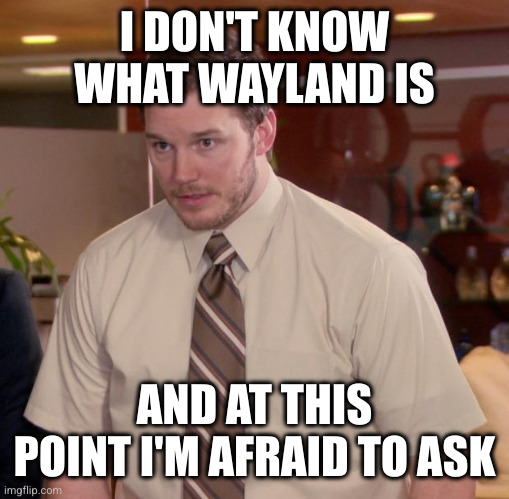this post was submitted on 29 Apr 2024
474 points (96.1% liked)
linuxmemes
21273 readers
1604 users here now
Hint: :q!
Sister communities:
- LemmyMemes: Memes
- LemmyShitpost: Anything and everything goes.
- RISA: Star Trek memes and shitposts
Community rules (click to expand)
1. Follow the site-wide rules
- Instance-wide TOS: https://legal.lemmy.world/tos/
- Lemmy code of conduct: https://join-lemmy.org/docs/code_of_conduct.html
2. Be civil
- Understand the difference between a joke and an insult.
- Do not harrass or attack members of the community for any reason.
- Leave remarks of "peasantry" to the PCMR community. If you dislike an OS/service/application, attack the thing you dislike, not the individuals who use it. Some people may not have a choice.
- Bigotry will not be tolerated.
- These rules are somewhat loosened when the subject is a public figure. Still, do not attack their person or incite harrassment.
3. Post Linux-related content
- Including Unix and BSD.
- Non-Linux content is acceptable as long as it makes a reference to Linux. For example, the poorly made mockery of
sudoin Windows. - No porn. Even if you watch it on a Linux machine.
4. No recent reposts
- Everybody uses Arch btw, can't quit Vim, and wants to interject for a moment. You can stop now.
Please report posts and comments that break these rules!
Important: never execute code or follow advice that you don't understand or can't verify, especially here. The word of the day is credibility. This is a meme community -- even the most helpful comments might just be shitposts that can damage your system. Be aware, be smart, don't fork-bomb your computer.
founded 1 year ago
MODERATORS
you are viewing a single comment's thread
view the rest of the comments
view the rest of the comments

Programs running graphically (Firefox, your file browser, etc.) need a way to tell the system "draw these pixels here". That's what the display server does; it takes all these applications, works out where their windows are and manages that pixel data.
XOrg has historically been the display server in common use, but it's very old and very cobbled together. It generally struggles with "modern" things that must people expect today. Multimonitor setups, vsync, hdr and all that. They work, but support is hacked together and brittle.
Wayland is a replacement for XOrg that was designed from scratch to fix a lot of these issues. But it's been an uphill battle because XOrg is the final boss of legacy codebases.
tl;dr They're both software that manages drawing pixels from applications to the display.
The TLDR was really helpful NGL
So it's software that handles software wanting to display things on the screen. Because having each piece of software do it itself would be not only chaos but a massive security concern. And it's a big deal because it fixes (by replacing) the old software with something that's easier to work with than the old ways of doing things (due to all new code that's not spaghetti that's hacked together over decades).
Am I close?
Not really, the main point is that (most) apps don't know where they are on the screen, whether they're minimized, on the active workspace, ... and they don't care either. That's the responsibility of the window manager.
The app tells the display server "I need a window to display these pixels" and that's it. And the window manager, well, manages these windows.
On the topic of security, X11 doesn't handle security at all, that's one of the main issues. So any graphical app can read the other windows' pixels, grab everything you type, everything you copy, ... OTOH Wayland isolates apps so they can't do that by default. Apps that really need to (screenshot apps, ...) can use "portals" to ask for these permissions.
Does it also handle key and mouse inputs to make sure they're interpretted by the right programme in the right context?
Yep that's also the WM's job.